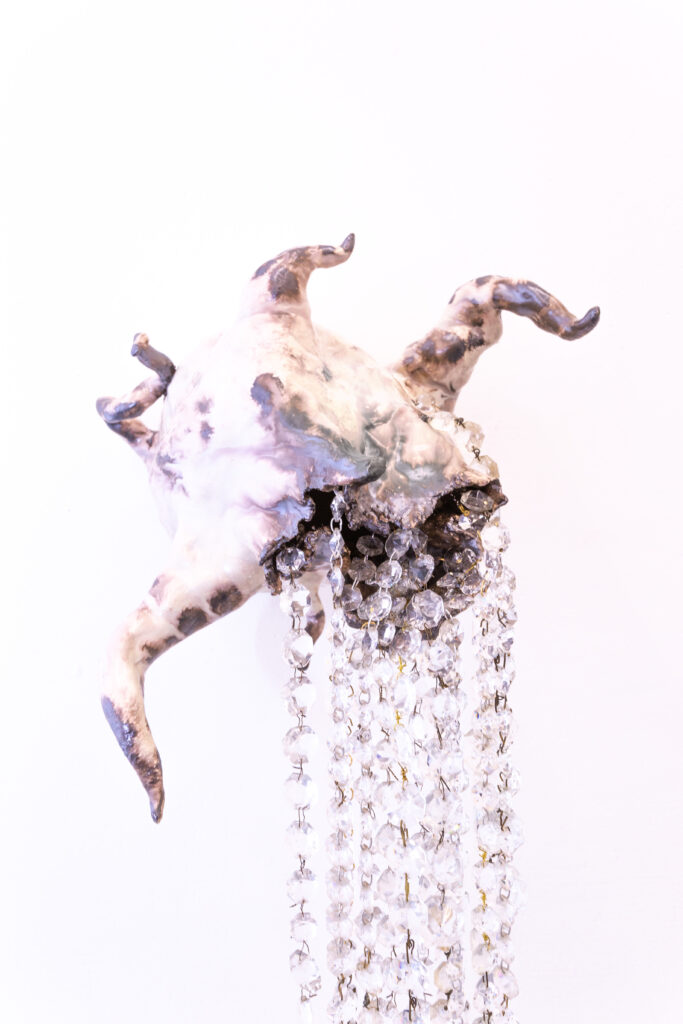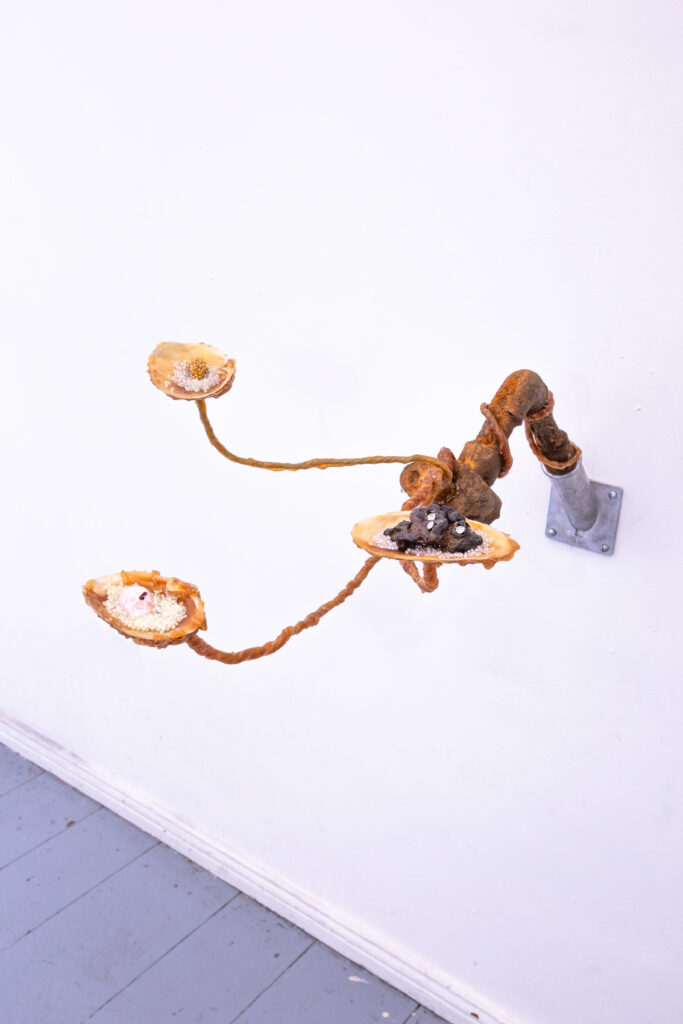More about Anouk van Wijk’s Work
wordly wedlock (mirror),
a bed of wet grass [1] (Wall sculpture with crystals),
a bed of wet grass [2] (Wall sculpture with branches),
to walk in a neatly paved but heavily trembling world (Tapestry)
Glazed ceramics, glass pendalogues, hand engraved mirror, rusty pipe, iron wire, natural rubber, seashells, glass beads, flag holder, variety of tufted yarn, heating pipes, synthetic hair
“In the Communion of Open Pores
Existence is no longer enclosed in the body
We are not a collection of individuals
But a macro organism living as an ecosystem
We are completely outside ourselves
And the world is completely inside us”
 recites a little girl’s voice in the song Extreme Love by Holly Herndon. When ‘existence no longer enclosed in the body’ and every being resides in another’s folds, Anouk van Wijk visualizes an endlessly entangled, leaky, gooey assemblage, spilling over and over into its many others. What does it mean if ‘we are completely outside ourselves and the world is completely inside us?’ The process of regeneration, decay, and transformation are erratic ones, just like the series of works on display here: a whimsical wall creature spits out strings of glistening crystals, as if discarding parts of itself. A wall tapestry shaped like an unorderly cluster of cells grows over and under the rigid metal frame, failing in its attempt to contain this growth. A frisky, branch-like sculpture sprouts from the wall, presenting a selection of curiosities to the viewer.
recites a little girl’s voice in the song Extreme Love by Holly Herndon. When ‘existence no longer enclosed in the body’ and every being resides in another’s folds, Anouk van Wijk visualizes an endlessly entangled, leaky, gooey assemblage, spilling over and over into its many others. What does it mean if ‘we are completely outside ourselves and the world is completely inside us?’ The process of regeneration, decay, and transformation are erratic ones, just like the series of works on display here: a whimsical wall creature spits out strings of glistening crystals, as if discarding parts of itself. A wall tapestry shaped like an unorderly cluster of cells grows over and under the rigid metal frame, failing in its attempt to contain this growth. A frisky, branch-like sculpture sprouts from the wall, presenting a selection of curiosities to the viewer.
A mirror, engraved with a playful alteration of the traditional bridal poem ‘something old, something new, something borrowed, something blue’, reflects the image of the viewer, framed by a population of crawly critters. Through perceiving the human body as an ecosystem of multiple companions, this work queers the concept of marriage in its traditional sense and instead calls for an entangled, co-constituted, and heterogeneous perception of union: a worldly wedlock. All of these works play with the concept of the grotesque, and the ambivalent feeling of simultaneous repulsion and attraction. The “creepy crawlies” that come to the surface with questioning the boundaries of bodies, often evoke such reactions. However, these critters are the cause of both the rot and renewal life is so dependent on, and can you even make a distinction between the two?

 Anouk van Wijk [ 1994] works as a visual artist on sculptural installations in ceramics, textiles, marble, and found materials.
Anouk van Wijk [ 1994] works as a visual artist on sculptural installations in ceramics, textiles, marble, and found materials. recites a little girl’s voice in the song
recites a little girl’s voice in the song 